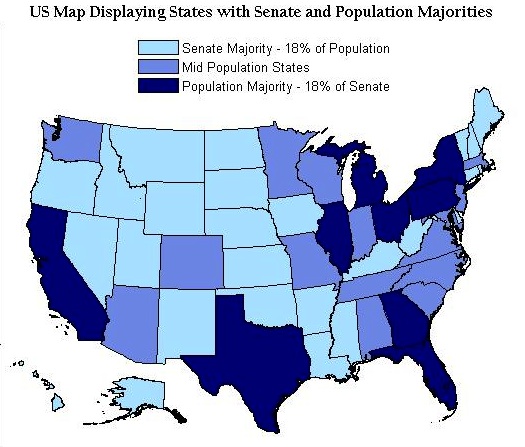
The US Senate is one of two branches of Congress and has existed since the writing of the Constitution. However, the Senate’s rule of equal representation for each state made little sense when the Constitution was written and makes no sense now. Originally formulated by the Founding Fathers as a replicate of the British House of Lords, the Senate was meant to be run by the upper classes who would protect large property owners from democracy. Additionally, the Founding Fathers were anxious to get all 13 American colonies to join the United States and were willing to make concessions to smaller colonies to assure their membership. In the original thirteen states, the ratio between the largest and smallest populations was 11 to 1, between Virginia and Delaware. Today, California has 66 times the population of Wyoming, and the citizens of Wyoming have 66 times as much representation in the Senate.
In 2004, Richard Rosenfeld wrote an article in Harper’s which lambasted the Senate. In that article, Rosenfeld noted that the least populous 26 states form a majority in the Senate, but represent only 18% of the population. Additionally, the largest nine states in the US contain 51% of the population, but are only 18% of the Senate. At the top of this article is a graph that illustrates this absurd state of affairs, displaying the states involved in the aforementioned calculations. I’d like to thank Bradley Brauer for giving us the data for the state borders.
This imbalance in representation has many effects on political decisions. The Senate skews the electoral system, which has accounted for three presidential candidates winning the popular vote but not the presidency. This branch of Congress also reduces the representation of minorities the government and slows down social progress. Additionally, the structure of the Senate allows less populous states to extract large amounts of funds from the federal government in exchange for votes. In the next few posts, I will display more graphics that illustrate the absurd and unjust nature of the Senate and why this institution needs to go.
